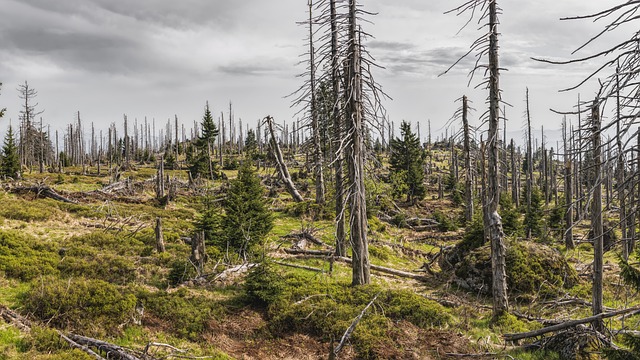Environmental monitoring and conservation are critical to sustaining our planet’s ecosystems and combating climate change. Leveraging the power of artificial intelligence (AI), organizations can now optimize efforts in tracking wildlife, detecting pollution, managing natural resources, and monitoring environmental changes in real time. AI technologies such as machine learning, remote sensing, and predictive analytics are being deployed to tackle challenges like biodiversity loss, water quality analysis, and deforestation monitoring. In this blog, we’ll explore how AI is transforming environmental monitoring and conservation by delving into various applications and their impacts.
AI for Climate Change Mitigation
AI plays a significant role in mitigating climate change by analyzing vast datasets and identifying trends that humans might miss. For instance, machine learning algorithms can model weather patterns, predict extreme weather events, and provide insights for renewable energy optimization.
AI-powered platforms analyze satellite data to track carbon emissions globally, allowing policymakers to focus on high-emission areas. Additionally, artificial intelligence contributes to the development of smart grids, enhancing energy efficiency and reducing carbon footprints. By simulating future climate scenarios, AI aids in creating actionable strategies to meet climate goals.
On a granular level, AI supports reforestation projects by identifying optimal planting locations based on soil and climate conditions. It can also predict the impact of rising temperatures on specific regions, helping authorities implement preventive measures.
AI in Wildlife Tracking and Protection
Wildlife conservation has been revolutionized by AI-driven technologies. Automated systems, powered by AI, monitor endangered species in their natural habitats using camera traps, drones, and GPS trackers.
AI models analyze images and videos from camera traps to identify species, detect poachers, and alert authorities to potential threats. Drones equipped with AI can monitor vast forest areas, ensuring illegal activities like logging or poaching are detected and prevented. Moreover, AI-powered acoustic sensors can record and analyze animal sounds, providing data on population dynamics and habitat usage.
This technology minimizes human intervention while offering precise, real-time data crucial for informed decision-making. By improving the efficiency and effectiveness of monitoring programs, AI ensures that conservationists have the tools they need to protect vulnerable species.
AI for Ecosystem Monitoring
Ecosystem health is vital for environmental stability, and AI has become a game-changer in this domain. By analyzing data from satellites, sensors, and field studies, AI provides a holistic view of ecosystems.
For instance, AI helps in detecting changes in vegetation cover, monitoring water bodies for contamination, and predicting the spread of invasive species. Predictive models assess the risk of ecosystem degradation, enabling stakeholders to intervene before irreversible damage occurs. AI-powered tools also assist in coral reef monitoring, identifying areas affected by bleaching and guiding restoration efforts.
Collaborations between AI developers and ecologists have resulted in tools that allow continuous and comprehensive ecosystem assessment. This integration ensures that conservation actions are timely, targeted, and impactful.
AI in Pollution Detection and Control
AI offers advanced capabilities in detecting and controlling pollution. Smart sensors, powered by AI, continuously monitor air and water quality, identifying pollutants and their sources.
In urban environments, AI predicts air quality trends, guiding policies to reduce vehicular and industrial emissions. AI algorithms analyze wastewater treatment data to optimize processes, ensuring compliance with environmental regulations. Additionally, machine learning models track oil spills and chemical leaks, offering quick response solutions to mitigate their impact.
By providing actionable insights, AI-driven systems help industries and governments achieve sustainable practices. These innovations contribute significantly to reducing pollution levels and safeguarding public health.
AI in Natural Resource Management
Efficient natural resource management is essential for sustainability, and AI excels in this area. AI systems optimize water usage in agriculture through smart irrigation techniques, conserving resources while improving crop yields.
In forestry, AI predicts fire risks, enabling proactive measures to prevent large-scale destruction. Mining operations leverage AI to minimize environmental impact by optimizing resource extraction and reducing waste. AI also supports fisheries management by monitoring fish stocks and guiding sustainable harvesting practices.
These applications demonstrate how AI ensures the balanced use of resources, maintaining ecological integrity while supporting economic growth.
Predictive Analytics for Environmental Changes
Predictive analytics is one of AI’s most powerful tools for environmental monitoring. By analyzing historical and real-time data, AI forecasts changes in environmental conditions, enabling proactive measures.
For example, AI models predict sea-level rise, guiding urban planning in coastal areas. Predictive tools also assess the impact of land-use changes on ecosystems, ensuring development projects adhere to sustainability standards. Additionally, AI identifies potential disaster zones, facilitating early warnings and disaster preparedness.
Such insights empower governments, organizations, and communities to adapt to environmental changes effectively, reducing risks and fostering resilience.
Conclusion
Artificial intelligence is proving to be a transformative force in environmental monitoring and conservation. From mitigating climate change to protecting biodiversity and managing natural resources, AI offers innovative solutions that drive efficiency and effectiveness. By harnessing its potential, we can address pressing environmental challenges and pave the way for a sustainable future.






